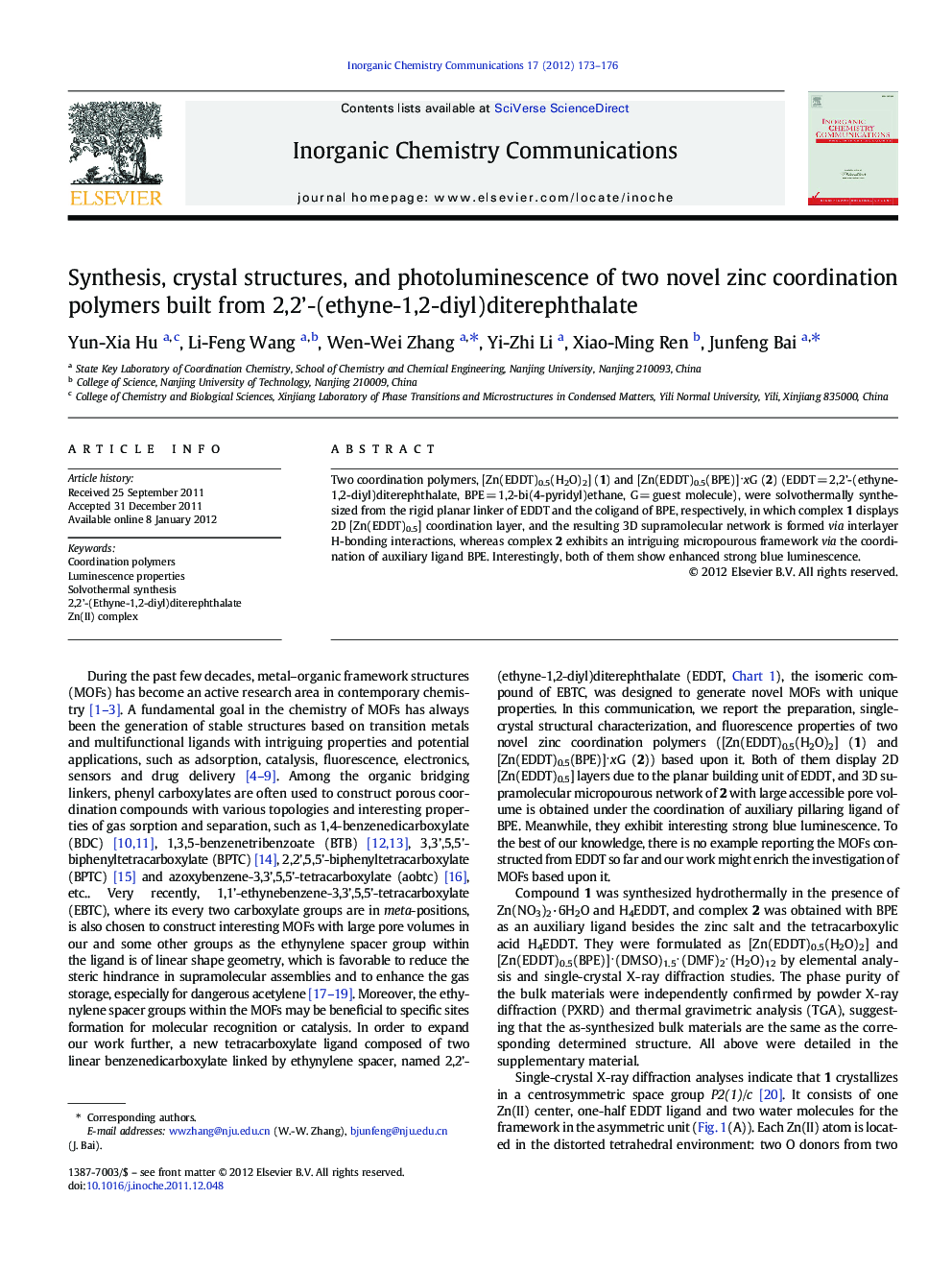| Article ID | Journal | Published Year | Pages | File Type |
|---|---|---|---|---|
| 1302084 | Inorganic Chemistry Communications | 2012 | 4 Pages |
Two coordination polymers, [Zn(EDDT)0.5(H2O)2] (1) and [Zn(EDDT)0.5(BPE)]⋅xG (2) (EDDT = 2,2’-(ethyne-1,2-diyl)diterephthalate, BPE = 1,2-bi(4-pyridyl)ethane, G = guest molecule), were solvothermally synthesized from the rigid planar linker of EDDT and the coligand of BPE, respectively, in which complex 1 displays 2D [Zn(EDDT)0.5] coordination layer, and the resulting 3D supramolecular network is formed via interlayer H-bonding interactions, whereas complex 2 exhibits an intriguing micropourous framework via the coordination of auxiliary ligand BPE. Interestingly, both of them show enhanced strong blue luminescence.
Graphical abstractTwo novel coordination polymers, 2D layer motif of [Zn(EDDT)0.5 ∙ 2H2O] (1) and 3D microporous network of [Zn(EDDT)0.5∙(BPE)]⋅xG (2), built from the rigid planar ligand 2,2'-(ethyne-1,2-diyl)diterephthalate (EDDT) and the pillaring auxiliary ligand 1, 2-bi(4-pyridyl)ethane (BPE), exhibit enhanced strong solid-state luminescence.Figure optionsDownload full-size imageDownload as PowerPoint slideHighlights► Zinc coordination polymers built from rigid planar tetracarboxylate ligand of 2, 2'-(ethyne-1, 2-diyl)diterephthalate (EDDT). ► 2D layered or 3D micropourous supramolecular network. ► Strong blue emission in the solid state at room temperature.
